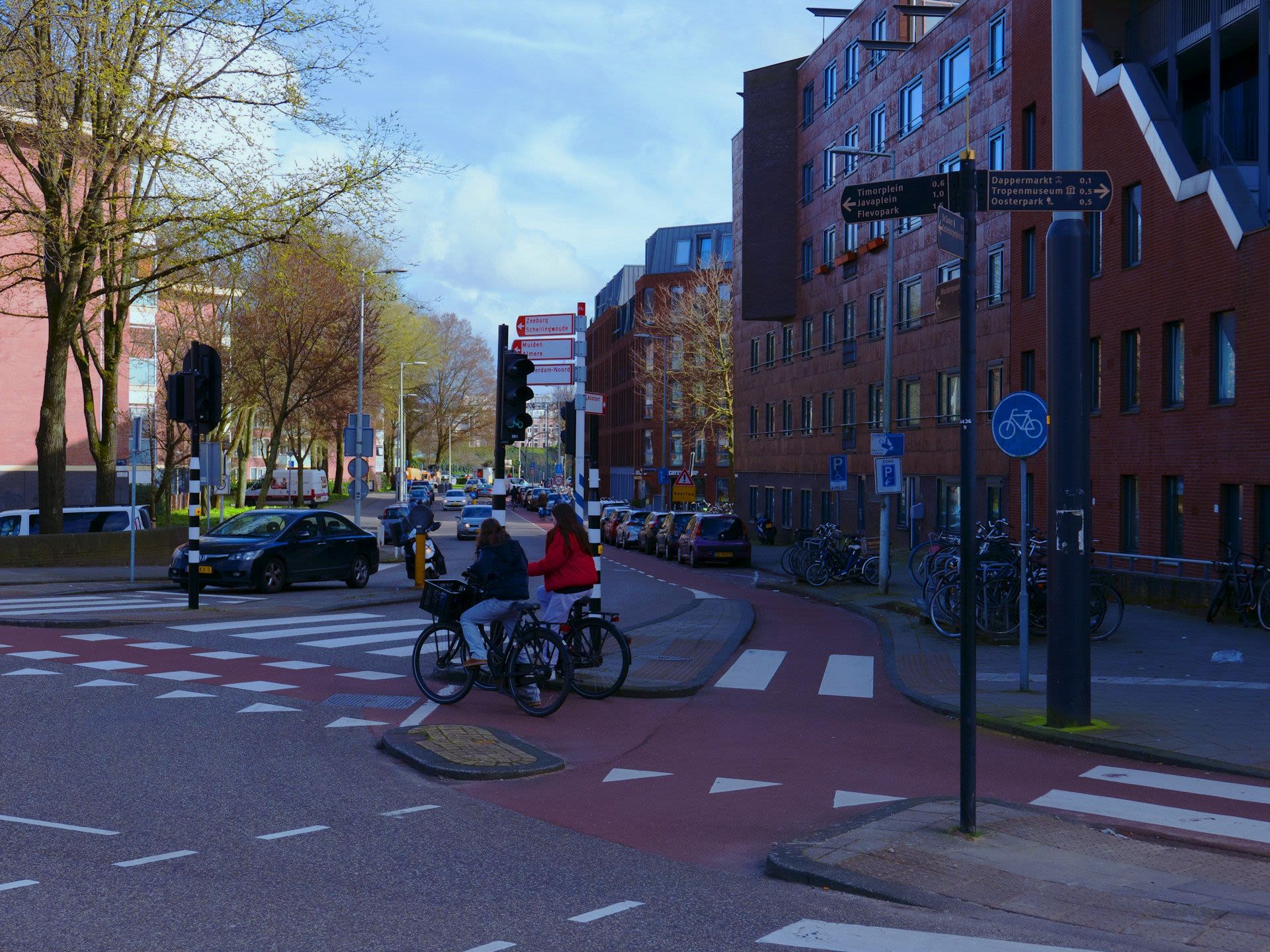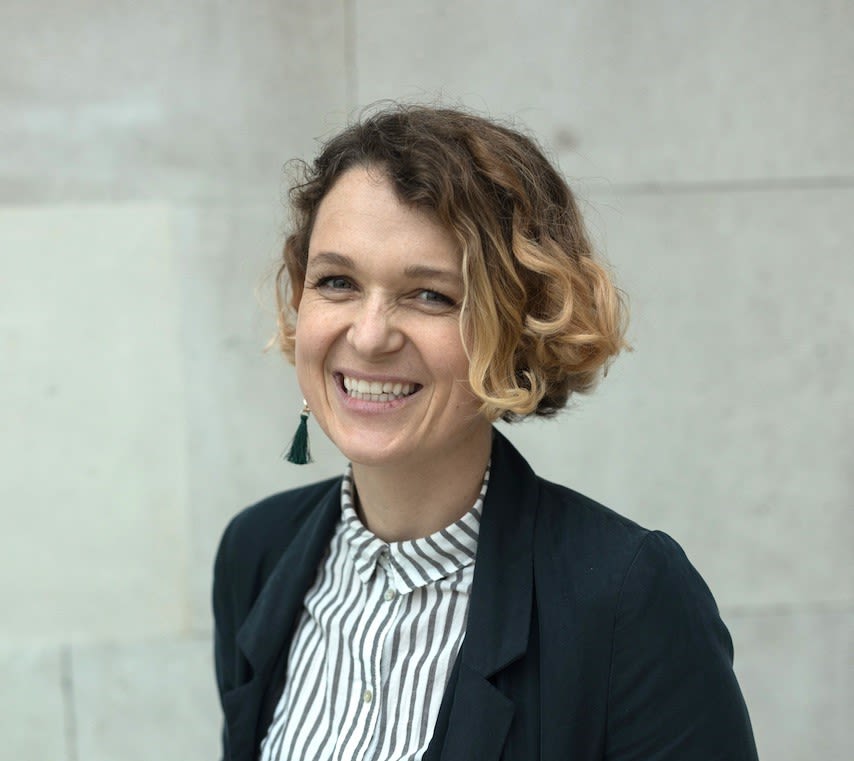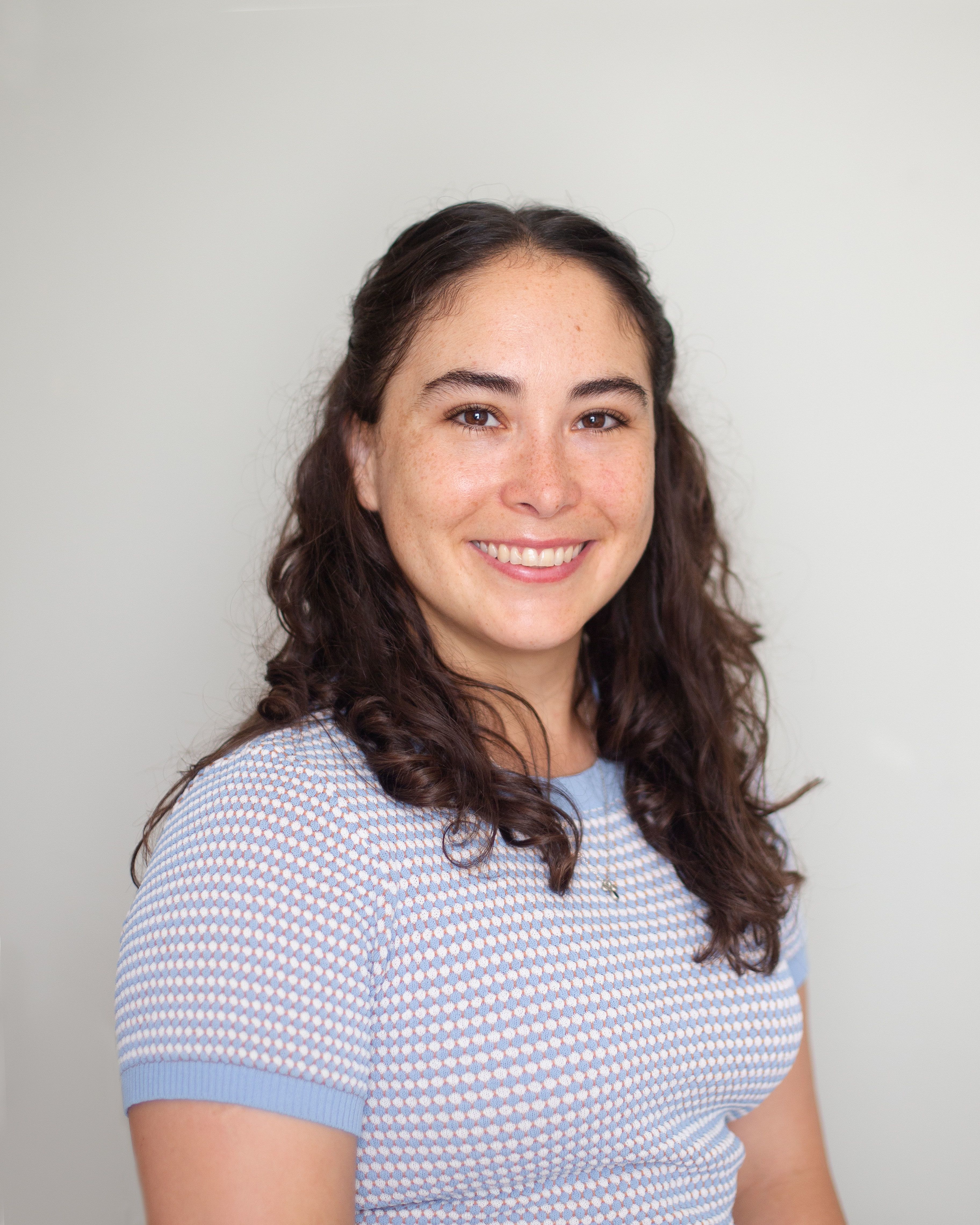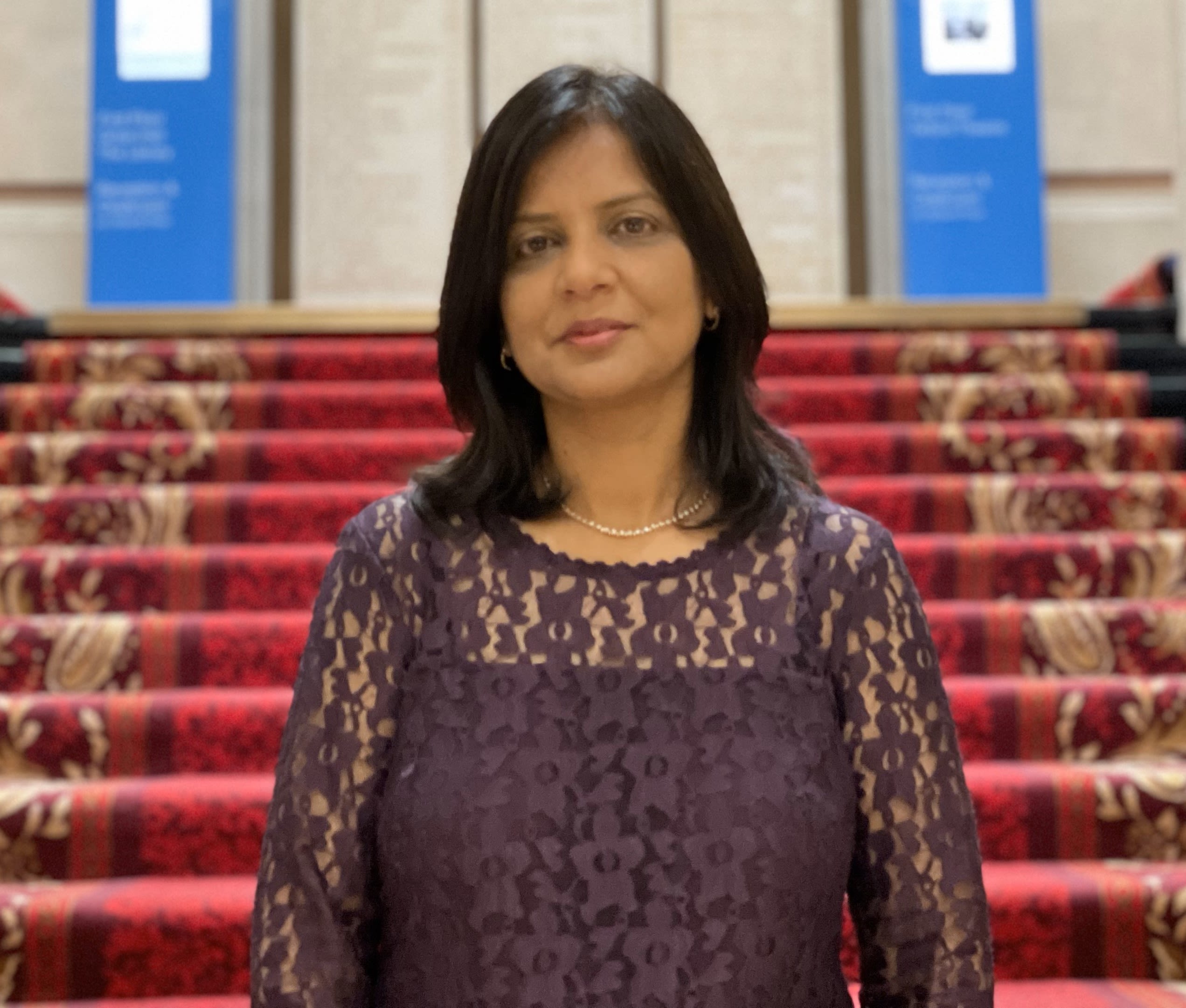Podcast: Planning Urban Environments for Women’s Safety
How can built environment practitioners make cities safer for women?

Can research from universities make cities safer for women and change how secure they feel?
Dr Hanna Baumann, Principal Research Fellow at the UCL Institute for Global Prosperity, joins experts Professor Priti Parikh and Dr Margarita Garfias Royo from The Bartlett School of Sustainable Construction to discuss the way urban infrastructure impacts on women's safety and understanding their experiences through community-based research.
Listen to the podcast
Transcript
Voiceover:
This is a podcast for the Bartlett Review, sharing new ideas and disruptive thinking for the built environment. Brought to you by the Bartlett faculty of the Built environment at University College London.
Dr Hanna Baumann:
It's totally normalised. 95% of people are not reporting it because they assume that's just part and parcel of being a woman in urban space.
Prof Priti Parikh:
By making cities safe for women, we're making cities safe for every person, every citizen of the city.
Dr Margarita Garfias Royo:
Violence is also facilitated by a culture of violence integrated in the political and the social systems of a place.
Prof Priti Parikh:
This is a podcast from the Bartlett Review, sharing new ideas and disruptive thinking for the built environment. Brought to you by the Bartlett Faculty of the Built Environment at University College London. Hello, my name is Priti Parikh, and welcome to this latest episode of the Bartlett Review podcast. I'm a professor of infrastructure engineering and the director of The Bartlett School of Sustainable Construction. We are going to turn our attention to the issue of women's safety in urban spaces. Sadly, the news is often filled with stories of women and marginalised groups being attacked in towns and cities. Quite often it is the most serious incidents that make the news and the vast majority of incidents pass almost without being reported or addressed. With this in mind, UCL has been at the heart of projects addressing these challenges from studying the way urban infrastructure impacts on safety and understanding lived experiences through community-driven safety audits. I'm delighted to be joined today by Dr. Hanna Baumann from the UCL Institute for Global Prosperity.
Dr Hanna Baumann:
Glad to be here.
Prof Priti Parikh:
And Dr. Margarita Garfias Royo, my colleague here at the Bartlett School of Sustainable Construction, and an expert on issues of gender, built environment and international development.
Dr Margarita Garfias Royo:
Hi everyone. I'm also really glad to be here.
Prof Priti Parikh:
Welcome to both of you. Obviously we all want our cities to be safe, but we know that's not the case. Hanna, can you shed a light on the problem for us?
Dr Hanna Baumann:
Yeah. We know that cities can be immensely valuable and offer lots of opportunities to people, the economic opportunities, the cultural richness of cities, the way that people come together from all different walks of life, make cities these exciting places. But when the urban space becomes hostile and people spend a lot of time trying to protect themselves or thinking about how they navigate the city, then they can't make use of all those resources. In London, which is in global comparison, a fairly safe city. We've had in recent years numerous high profile murders of women and girls in public spaces. People may remember the case of 15-year-old Ilianne Andame, of Sabina Nessa and Zara Alina, of Biba Henry and Nicole Smallman, just to name a few names from the last few years. These shocking cases reminded us that the city can be a really hostile and dangerous place for women.
We know, for example, that about a quarter of all women have experienced rape or sexual assault. So if it hasn't happened to you, it's happened definitely to someone you know. It's very common. About a million cases in the UK every year, seven in 10 women in the UK experience sexual harassment in public spaces. When we're looking at younger age groups like 18 to 24-year-old, it's almost 100%. So most recent statistic from UN women is 97% in that age group experience this, it's totally normalised. 95% of people are not reporting it because they assume that's just part and parcel of being a woman in urban space. We also know that public transport is a key site for this. So 55% of women in London have been subject to unwanted sexual behaviour while on public transport. And again, only 2% report this. So what's the effect of this? It limits participation. We know that women avoid exercise, socialising, hobbies, work and educational opportunities because they're either experiencing sexual harassment or they're worried about experiencing it. So this is really uneven risk and reduced life opportunities in the city.
Prof Priti Parikh:
Hanna, this is absolutely distressing to hear the stats and also the workaround that often women have to do to navigate the city to access opportunities that simply should be accessible really. And I know Maggie, you've been looking at similar issues in the global context.
Dr Margarita Garfias Royo:
So I didn't bring as accurate statistics for everywhere because I think this looks very different in different countries. And so in the case of Mexico, the newest figures show that sexual and psychological violence has actually increased, and at least half of the women have experienced this. But it depends on which state you're talking about and whether women actually share the real life experiences. So for example, the state that I'm from, Queretaro, at least 70% of women have experienced some form of violence in their lifetime, and it's actually one of the highest rates in the country. And I think these echos also kind of global statistics where studies by the World Health Organisation have shown that at least one in three women globally have experienced some form of violence in their life. And this equates to about 736 million women around the world. So this is a really big issue and it's quite complex. However, this doesn't mean that this should stop us from trying to understand it and find ways to moving forward to creating safer spaces for women.
Prof Priti Parikh:
Absolutely. I mean, one in three, that's a shocking stat really. And we talk about skills in workforce and diverse workforce and all those issues around how to get more people into jobs, but how can that be achieved if women cannot navigate the cities safely? And we are sat here as three built environment professionals. So I want to dig a little bit into how we can use measures in the built environment, think about how can we make our built environments safer to enable women to better navigate our cities? And Hanna, I'm going to turn to you first for your insights.
Dr Hanna Baumann:
Yeah, I mean, I think there's a small caveat. All these statistics we heard about violence against women. We have to say that stranger danger, as it's known, is not the main source of violence and danger for women. Actually, most violence happens in the home. So in terms of the basic things that can be done in the built environment, something we always hear is sort of visibility, lines of sight lighting, especially at night. Things like wayfinding and signposting, either entry and exit points. The women I've spoken to call it escape routes, oftentimes, yeah, women navigate space, very much aware of where they can get away. I think questions like maintenance and cleanliness come up quite often. If a place looks like it's not been taken care of, if there's been vandalism, it sort of invites more antisocial behaviour and women don't feel safe. And in terms of what really works, I think, and we can go into more depth with this later, is spaces that are multipurpose where various groups are using it at different times of day so it doesn't suddenly become deserted once night falls in the offices and shop closes, things like that and where different types of people feel welcome.
Dr Margarita Garfias Royo:
And if I can add something to what Hanna is mentioning, this also intersects with just general crime. So a lot of these issues if addressed, they also address just general crime. So it's a multifaceted solution that would not only work to make city safer for women from violence and gender violence, but also just general perceptions of crime and in terms of global south and less developed countries, if you will. This also has issues with maintenance and actually just having infrastructure. So for example, if you have derelict sidewalks or non-existent sidewalks, this may also impact mobility, impact the sense of security. It would impact maybe this disability. And this is related to guardianship as well. In criminology.
Dr Hanna Baumann:
What's guardianship?
Dr Margarita Garfias Royo:
Guardianship has to do with somebody being able to just see what is happening, whether it's lighting, whether it is escape routes, as you mentioned, whether it is just being able to see really this is where the human component comes in of whether you are watched or not and how you would react differently.
Prof Priti Parikh:
So what you are both highlighting is that by making cities safe for women, making cities safe for every person, every citizen of the city, making our cities warm, welcoming and inclusive. And I think that's core and fundamental to what we should be doing as built environment professionals. So Hanna, I would like you to reflect on the fact that we need to make cities safe and inclusive for all. And what would be interventions and steps towards that?
Dr Hanna Baumann:
Well, I've been part of a project over the past year for the mayor's office for policing and crime here in London and Transport for London, where we were looking specifically at women's safety and developing a process called Women's Safety Audit. And what we did is we recruited around 50 local women, girls and gender diverse people in five locations around London, Brixton, Waltham Forest, Paddington, Uxbridge and Brent. And here the diversity was really important. We had people from age 17 to 70, different ethnicities, different sexual orientations, a good chunk, 6% of them living with disability as well. And they were trained by the UCL Citizen Science Academy to do research in their own communities. And they then recruited in turn 110 participants who also paint a really broad picture of society in London. So we had single moms with toddlers, retired over 80 year olds who've lived in an area for decades.
So really broad. And this I think is the value of this kind of approach by not coming as a researcher with a clipboard and trying to recruit some teenage girls and ask them about really sensitive experiences, but instead training local community members to reach out to their family and friends and then do these audits. We got just really valuable data that showed the diversity of experiences and they used all kinds of different methods from kind of quite standard checklists to interviews and small groups to also participatory mapping and something we called multisensory walking. The participants would go to a particular site and close their eyes, for example, and listen to what's going on around them, use all their senses, smell, temperature, the weather, even think about how tense their shoulders feel. Although it sounds maybe not very objective as a research method. It was really helpful and I think a lot of the participants found it the most insightful method.
So for example, ethnicity played a key role in questions of street harassment. The younger women and girls were the less safe they felt motherhood really changed the way that a place felt safe or not.
The first thing everyone always goes to when you talk about women's safety is lighting, more lights everywhere, really bright floodlights and sometimes that can be too much. So for neurodiverse people actually when the light is too bright, they might avoid a space and they might actually go down some dark alley instead because it's too intense for them. So there's sort of subtle things where you need to be careful and getting that lived experience from people is really important in understanding also local specificities of local neighbourhoods, cultural issues and so on.
Prof Priti Parikh:
Very, very interesting insights. And I know Maggie, you were developing heat maps in Mexico. So tell us about some of the stress or risk points that you identified in your research.
Dr Margarita Garfias Royo:
Yes. So I tried to understand where in the city women were facing more issues to then go and understand how the spaces looked like. I did find as well that you can have two spaces that look exactly the same, but in one place, people, women or diverse genders may experience violence and not in the other one. For example, in Mexico, while I was doing my PhD, and I know that this is just one example, it may not be the case for all the other projects that are happening right now, but I did find that there were a lot of constraints by the local government to actually be involved. I tried to involve the local government in the study to try to access the police and police reports of crime. I did find that the stakeholders of that particular government were not necessarily interested in even accepting that violence was an issue in the state, despite Mexico being a very progressive place that has put forward a lot of laws and policies to protect women against violence.
However, at the local level, this was not happening. So maybe the government actually wanted to do something, but they didn't have the capacity or the resources to actually make this happen. And this all came together to actually reject and in some cases actively go against what I was doing and trying to stop it. So I do think that violence is also facilitated by a culture of violence integrated in the political and the social systems of a place. So we may make all this infrastructural changes, if you will, if it's in the built environment, if you still have this culture around it where you don't get that support, that violence is still going to be produced. I don't want to sound too gloom and doom in that there's nothing that can be done about it because there's been amazing massive campaigns in Mexico to try to change the social understanding of what violence is. And I think younger women, and this came across in my study and I think it's even more highlighted now, younger women understand more what this is and are more against it and are getting themselves protected with each other when a state will not.
Prof Priti Parikh:
Absolutely. So I mean it feels like we as built environment professionals of course have to develop safe, inclusive public spaces, think about public transport, the right amount of lighting, all those physical interventions, but they do need to be accompanied with inclusive participatory design approaches that need to be supported by strong public awareness campaigns. So this is just not a matter of us drawing some tech at the city and expecting the city to be safe automatically. So I think combining the two is crucial.
Voiceover:
This is the Bartlett Review podcast sharing new ideas and disruptive thinking for the built environment.
Prof Priti Parikh:
Now when we talk about safety in cities, usually the first thing people think about is better policing versus planning. So just wanted your take on this. Is it a policing versus planning issue or do we need both?
Dr Hanna Baumann:
I don't think it's an either or question really. We've seen that it's an all encompassing problem. It's deeply ingrained in cultures. It's something that happens in the private sphere, in the public sphere. It's an all encompassing problem. It won't be solved by one approach alone. We really need all hands on deck. And for us as urbanists, built environment professionals as well as public sector workers, we have a duty to ensure equitable access to the public realm, to public services to the city as a whole. And we can see that currently safety concerns are really limiting women's enjoyment of the city and their ability to make the most of all the resources that it offers. Leslie Kern, who's the author of a book called The Feminist City, says, no amount of lighting is going to dismantle the patriarchy if even if you have the most perfectly designed spaces, if these attitudes still prevail and that the root causes aren't addressed, then the flash points of violence might just move somewhere else. You're not going to eradicate it that way.
Dr Margarita Garfias Royo:
And I just wanted to add as well, that at least in policing for example, this also comes to an issue of what is considered a crime and what is not. So these numbers may look different if you just ask women and other genders as well, whether they've experienced violence and what violence means for them versus what violence means within the legal context and within the legal framework. So I think I'm talking more about the statistics of policing, by the way, but we do need to acknowledge that these do inform policing practises. So I think we need to touch on the biases at each point of how we look into this and how we actually apply it. But definitely I agree that it is hand in hand. You cannot just have one and not the other. They need to come together and sometimes they come together more in agreement than others. So it's kind of having conversations with different people to understand their views on the issue and how we can move forward with that. And it will look different in different places as well.
Prof Priti Parikh:
We absolutely need a multi-stakeholder approach here. And with policing, sometimes I feel there's a lot of attention on what we call the serious high risk crimes, but quite often I know when people walk in cities, there's still people stare at women, and those kind of subtle signals which still bring discomfort, still give a perception that the city is not inclusive and safe and will lead to quite often women using different measures or putting in more resources to access different routes or them having to look for routes that they find safe, which will be longer increasing their travel time.
Dr Margarita Garfias Royo:
Definitely. We also need to think about resources. Are there actual resources to address this or are there other ways that we can do this with more awareness campaigns and social and community campaigns? It's a difficult question I think to answer because we would probably need legal people having that conversation here with us. But I definitely agree that even if they may not be considered crimes or may not be prosecuted as crimes, they do have a direct impact on women's lives and their attitudes and the way they navigate the city and also the kind of measures they take to protect themselves, which has been shown in different parts of the world. They actually apply similar strategies.
Dr Hanna Baumann:
And I think something that I encountered in talking to policymakers is sometimes a distinction between perceived threats or feelings of unsafety and real issues of unsafety and crime. And first of all, as we know that the crime statistics are not capturing the real risks, so we can't say this is the hard data because it's actually missing a big part of it, and there's not a big gap between the perceptions of unsafety and the actual unsafety. So these feelings of unsafety are really real and there doesn't have to be a physical assault for there to be a real tangible impact on the ability for women to take part in the city. The charity plan International recently published a report on something they called the safety tax on women where they surveyed over a thousand women in the UK between young girls to young women between 14 and 21.
And it showed that over 60% take taxis home at least once a month to avoid risks associated with public transport or walking. On average, they pay £44 a month that adds up to around £500 a year. Some people pay up to £900 a year for these kind of taxis. Many as you were saying, choose a longer route. This is a time tax on people as well. If every week you're adding 30 minutes to your journey, that's 26 hours a year. So there's all subtle things that are so normalised for women that they don't even think about it oftentimes, but this is of course all energy, money, and time that you could be spending much better on other things. And we're not even beginning to quantify sort of the physical and health impact of just high levels of stress of when you're always alert of your surroundings, always looking over your shoulder and so on.
There's a real cognitive load, a real emotional burden as well that as you say, gives women the sense that the space is not for them. And there's so many cues in the built environment around that beginning from how playgrounds are set up with the spaces. 90% of the spaces is taken up by boys rather than teenage girls, or who do we value in our public spaces? Who are the squares and streets named after and who's shown on half naked on billboards? What is the value of women in public space? What is their place in the city? I think all these not so subtle cues add up to the signs that are then perpetuated through things like harassment and so on that this is not your place and you're not meant to be here really.
Prof Priti Parikh:
And the big frustration for me is we all know this, we talk about this, we think about this in our research. There are public organisations, there are policies, but the change is not happening. And a big part of that for me is not having inclusive leadership who is planning, who is designing our cities, what does the team look like? Does the team, the leadership team have diverse voices, people who would understand and get the stress, the anxiety, the cost, the additional time burden of unsafe cities? And in the Bartlett Review, we did a podcast where we were discussing women leadership in construction. And what was shocking that only 12 to 15% of senior leaders in the construction sector are women. So therefore, we are starting off at a point where we do not have diverse voices when we are planning new infrastructure, when we are delivering those big projects in public spaces. So then how can we really expect that to then translate into a better built environment?
Dr Hanna Baumann:
Absolutely, yeah. I think yes, we need more diversity in the field in all design teams, but until that happens, they also need to be processes that just sort of require decision makers and designers to think from the standpoint of others, even if they're not intuitively doing it already.
Prof Priti Parikh:
And there needs to be KPIs built throughout the process, measures through planning, design, delivery of those services, of those projects where safety issues are deeply embedded and built in, and not just the delivery of projects. I would say the maintenance of public spaces, something you alluded to earlier that we need to make sure our public spaces are welcoming, well, well-maintained lighting, they are clean, there are routes which are accessible. Our transportation facilities need to be accessible.
Dr Hanna Baumann:
Yeah, absolutely. And I think as design and built environment professionals, there needs to be an awareness that you're not just sort of reflecting the norms of the day, but you're also by building the built environment, you are cementing those norms. Right? There is a design collective called Matrix in the 1980s and 90s in London that was sort of the first big feminist design collective here. And they talked about many architects in designers try to design better kitchens so that women when they're standing at the sink are more comfortable. But actually we need to ask why are women standing at the sink in the first place and begin sort of questioning those underlying, and then we can sort of push ahead with societal change through the built environment and the materiality as well. And I think there's a few tools we can, because you were talking about KPIs and sort of processes.
There's a few tools in the UK that we could actually utilise to push this forward because we do have something called the public sector equality duty that requires public bodies like local authorities to consider how policies affect different people, especially those covered by the Equalities Act. And so actually every local authority has a duty to check, okay, if I'm redesigning this park, how will this affect different groups of people? Will everyone be able to access it in the same way, enjoy the benefits in the same way, how will different groups interact here? And if they're not collecting that data already, they actually have a legal duty to do that. And I think also as you say, building either safety audits or just a gender perspective into existing processes at the local plan level or town centre or high street strategies, we've been talking to Transport for London. They have a healthy streets approach. If gender becomes one aspect of that, if gender safety is one part of what's called health and safety, which is built into all these processes, if it becomes prioritised in the same way, then it just becomes normalised. I think often you were talking about budgetary constraints and so on before, it's a question of how high on the priority list is it? Because for health and safety, usually there is still money, even if budgets are tight.
Prof Priti Parikh:
And you're right, it isn't health safety issue really if people cannot navigate the city safely. And I was wondering about the role of social media. I mean, we've seen campaigns, Me Too, and a lot of activity on social media around this, and I was debating in my mind whether social media and the publicity helps or hinders safety in cities for women.
Dr Margarita Garfias Royo:
So in my opinion, I think this is a double-edged sword, and I think we've seen that with all the recent political issues around the world. So they can be very powerful and they can change norms and they can be very useful for raising awareness, but we also need to be careful in how it is used, what are the messaging they can be used for the absolute opposite effect.
Dr Hanna Baumann:
Yeah, I think because every woman has lived experience of this, it's not like social media is sort of whipping up a moral panic. We know exactly what we're dealing with, we just often don't know when and where it's going to happen. But I do think social media and media representations play a really big role and could be utilised to play a positive role in awareness, raising, encountering misogynistic content and so on. The visual representations that we see of women in the public realm or otherwise play a really big role for how women are perceived in normal life as well. There's a continuity between the two for sure.
Prof Priti Parikh:
We've been talking about some of the barriers and challenges for women to navigate our cities safely, but as built environment professionals, I would like to leave everyone on a more optimistic note. So Maggie, what do you think are the three or four quick and easy wins for us?
Dr Margarita Garfias Royo:
Yes, Priti. So I think this topic can become very daunting very quickly, and it can feel like there's not much you can do, but actually there are lots of things that we can do that some of them are obviously easier to implement. I think we talked a lot about social and community interventions. So for example, awareness campaigns, community organisations coming together to discuss these issues and tackle gender norms and gender roles. But at infrastructure level, for example, we can think about the sizing of the sidewalks, thinking about if you're building a road, how are people going to be crossing? So thinking about general mobility will definitely help reduce risk for women.
You can also think about, Hanna was mentioning earlier about health and safety measures, so just tailoring those to include this issues so that you have your policies there. Thinking about a company just maybe adding to that, the budget is there, just maybe make it more of a priority. Absolutely. So adding a column on whether it's a male or a female, it can be as simple as that in certain instances. And maybe I'll hand it to Hanna to add to this list, because again, it seems like there's not much to do, but actually there's loads.
Dr Hanna Baumann:
Yeah, I think there's many starting points. So what we found with the local researchers who were taking part in these women's safety audits, they said afterwards, before I just felt like there was this uneasy atmosphere. I didn't feel comfortable, I didn't feel safe, but I couldn't pinpoint the sources. After doing the audit, I know what the sources are in my neighbourhood and I can also advocate for changes in particular areas. It also brought different women and girls and gender diverse people together who are now, some of them are taking campaigns forward in their local areas. So I think having those tools and bringing people who care about these issues together that they can then advocate in their own communities is really key. I think an easy win in a UK context would be investing in social infrastructure. So key sites that women pointed out in these audits were things like libraries, the tube stations, public institutions where you don't need to pay money to go inside, where there might be a toilet as well, and where there staff increasingly fewer staff, and that's a problem, but those institutions make people feel safe. And if you invest in those and maybe top up their existing sort of baseline function with also that kind of community support function, I think that could be an easy and quick one.
Prof Priti Parikh:
And some of the facilities that are linked to public transport is important. You've mentioned cheap stations, having stations where they're perceived to be a safe environment, having toilets which are safe, which are well taken care of is really important, which quite often violence also takes place in public toilets, which are not well designed. And for me, I grew up in India and I've noticed a trend in Indian cities where we are building more and more flyovers. And then what happens is with the flyers, you get this strange dead space below them, which has no function, no purpose. Planners have almost bypassed that space. And then it becomes a breeding ground for violence in the desire to create more infrastructure. Sometimes we leave spaces behind which are unsafe.
Dr Margarita Garfias Royo:
Definitely. So just adding measures for mobility is just basic mobility also could support this. So I think the debate for the global health specifically may be for another time, however, it can still apply globally thinking about how people move, what types, what modes of transfer they use. Are they walking, are they using public transport? Are they just taking a car and integrating that into the plans from the beginning, not as an afterthought. Could also be a quick win.
Prof Priti Parikh:
I mean, I'm going to come back to toilets because I love talking about toilets, but in the global south, sometimes we have public toilets for informal settlements, which is pretty much a box placed right in the middle of the site with no lighting, with garbage, overflowing and it's the one spot where you know violence is going to take place because it's absolutely designed or set up for it. So it's also thinking about that basic key infrastructure and how we are placing it, how are people going to get access to it? Simply quite a lot of toilets are locked up in nights as well. So it's just thinking about how you position infrastructure in cities, which is key as well. On that happy note on toilets, let's bring this conversation to a close. Thank you so much to Hanna Bauman and Margarita Garfias Royo for the contribution to this very important topic.
Thanks for having us.
Definitely thank you for having us.
And for more information about the Bartlett School of Sustainable Construction, which is part of the Bartlett Faculty of the Built Environment at UCL, you can visit our website, ucl.ac.uk/Bartlett, and follow us on LinkedIn at the Bartlett UCL Faculty of the Built Environment.
About the speakers

Dr Hanna Baumann
Principal Research Fellow
UCL Institute for Global Prosperity

Dr Margarita Garfias Royo
Deputy Director of the Engineering for International Development Centre, The Bartlett School of Sustainable Construction.
Photo by Breno Assis on Unsplash
Photo by Breno Assis on Unsplash
The Bartlett School of Sustainable of Construction
The Bartlett School of Sustainable Construction is an international centre of excellence in the teaching and research of construction, project management, real estate and economics.
Photo by Brad Switzer on Unsplash
Photo by Brad Switzer on Unsplash
UCL Institute for Global Prosperity
The Institute for Global Prosperity is redesigning prosperity for the 21st century by transforming the way economies are conceived and managed, and redefining our relationship with the planet.
Podcast produced by Adam Batstone
© UCL The Bartlett 2025



